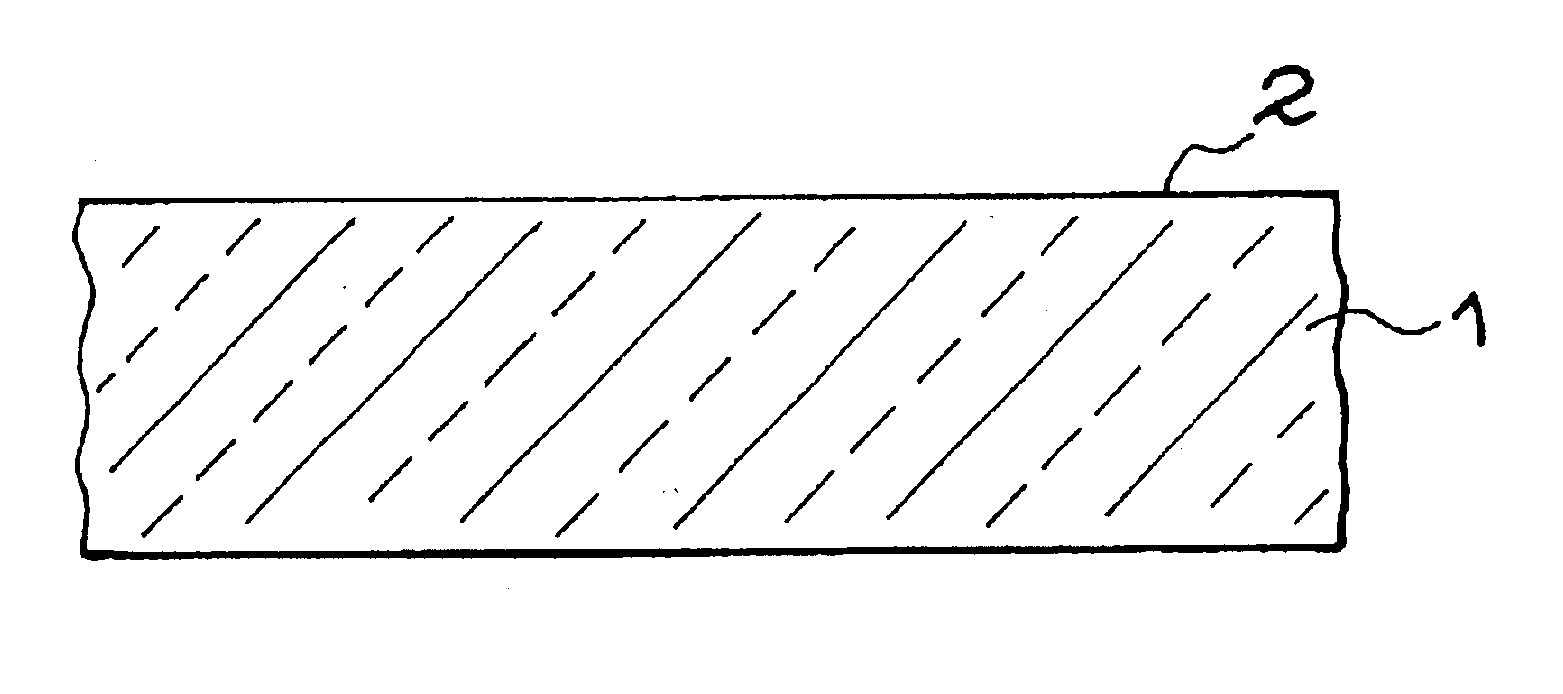Method for automatic organization of microstructures or nanostructures and related device obtained
a technology of microstructures and nanostructures, applied in the direction of polycrystalline material growth, crystal growth process, chemically reactive gases, etc., can solve the problems of system unusability, limiting the choice of materials from which to make the nanostructure, and none of these techniques appear to make auto-organization of nanostructures of nanometric size feasible with a good size uniformity
- Summary
- Abstract
- Description
- Claims
- Application Information
AI Technical Summary
Benefits of technology
Problems solved by technology
Method used
Image
Examples
Embodiment Construction
The following part of the description relates to making nanostructures on a support.
The device according to the invention includes a support composed of a substrate and a layer of material called the intermediate layer on which the nanostructures are deposited. For example, the substrate may be of the type described in document FR-A-2 766 620. FIG. 1 shows such a substrate, reference 1, with a surface 2 with a stress field.
The surface 2 of the substrate 1 is treated such that the intermediate layer formed on it is covering, uniform and homogeneous. For a substrate made of silicon, this treatment may be based on chemistry based on dilute HCl including ozone according to a known technique in microelectronics.
FIG. 2 shows the substrate 1 in FIG. 1 supporting an intermediate layer 3 formed from the treated surface 2. The intermediate layer 3 may be deposited on the surface 2 by a PVD technique or a CVD technique or a combination of the PVD and CVD techniques. If the substrate 1 is made ...
PUM
| Property | Measurement | Unit |
|---|---|---|
| temperature | aaaaa | aaaaa |
| thickness | aaaaa | aaaaa |
| resistivity | aaaaa | aaaaa |
Abstract
Description
Claims
Application Information
 Login to View More
Login to View More - R&D
- Intellectual Property
- Life Sciences
- Materials
- Tech Scout
- Unparalleled Data Quality
- Higher Quality Content
- 60% Fewer Hallucinations
Browse by: Latest US Patents, China's latest patents, Technical Efficacy Thesaurus, Application Domain, Technology Topic, Popular Technical Reports.
© 2025 PatSnap. All rights reserved.Legal|Privacy policy|Modern Slavery Act Transparency Statement|Sitemap|About US| Contact US: help@patsnap.com



